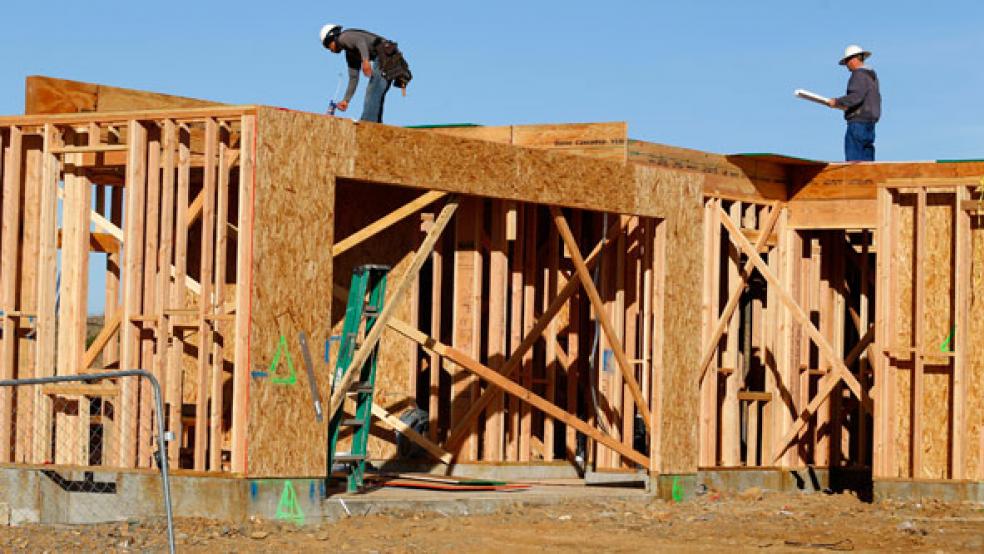That closet door that never closes right doesn’t have to stay that way. These days you just have to log on to find a handyman (or woman).
Consumers spend $250 billion a year on home repair and improvement, and to connect customers and contractors, a number of sites have emerged over the last few years and have been jostling for market share. The latest entrants are heavy-hitters Google and Amazon.
Most of the sites work the same way: You enter a description of your project and your location.
In return, you get a list of contractor profiles that include customer-service ratings on previous jobs. Many also offer matching services: You describe your job in detail, and the site puts you in touch with contractors who do that type of work.
But all the competition in this market sector doesn’t guarantee success. That’s why those who regularly work with contractors say consumers should follow these steps when using these sites.
Related: Remodel Your House and Get the Most for Your Money
1. Do your own due diligence. Regardless of what a site says about a contractor’s licensing and insurance, ask the contractor for evidence that they have both, says Debra Cohen of Home Remedies of NY Inc., a local contractor referral business.
2. Look for lots of reviews. A single review of a contractor, good or bad, isn’t enough to go on to decide whether to hire. (This also means contractor-review sites don’t work well in rural areas—there usually just aren’t enough reviews to get a picture of who’s good.)
3. Cross-check the ratings. If you find a contractor with good ratings on one site, run their name through one of the other sites to check whether the good ratings hold there too. That’s because there’s still “systematic fraud” in online review platforms despite their best efforts, according to a 2013 Harvard Business School paper.
4. Don’t dismiss word of mouth. Andrew Propst, president of the National Association of Residential Property Managers, says his company looks at the major review sites but finds that they “often only tell one side of the story.” He still prefers to find new contractors through trusted colleagues. And even then, he also asks the company for references from current or past customers and then calls them to hear about how their jobs went.
Still, for those without industry connections, contractor review sites sometimes can let them hire like pros. To help, we’ve broken down some of the differences between the leading sites. While this list isn’t exhaustive, it offers a profile of some key players.
Home Advisor.com
Cost: Free.
How it works: Plug in a Zip Code and a keyword and browse contractors in your area. Contractor ratings run from 1 to 5 stars and are based on customer reviews. The site also offers a matching service—you put in the details of your job, and HomeAdvisor gives you the names of contractors it says are qualified to do it. The site claims to check that vendors have trade licenses, does a criminal records search, and verifies insurance and other items.
How contractors pay: Contractors pay a “nominal” fee to HomeAdvisor when the site’s matching service connects them with a customer.
Process for eliminating fake reviews: A HomeAdvisor spokesperson says that 82 percent of the site’s reviews are written by customers who have hired the contractor they’re reviewing through HomeAdvisor. The other 18 percent involve customers who didn’t hire through the site, but she says HomeAdvisor calls each of these people to attempt to verify the information they provide.
Google+ Local
Cost: Free.
How it works: Plug in a location and a keyword in a search bar and browse profiles of contractors in your area, including reviews by other Google+ users, as available.
How contractors pay: Contractors can create a profile for free.
Process for eliminating fake reviews: Each review is connected to the profile of a Google+ user, which allows you to click through to check the reviews they’ve previously given. In theory that makes those reviews more trustworthy. But fake Google+ accounts are out there. Google+ now allows fake names, and there’s no way of knowing for sure whether the person posting has a relationship with the business they’re recommending. A Google spokesperson says they use “various techniques to identify and block fake reviews and [are] always looking at ways to improve these processes.”
Porch.com
Cost: Free.
How it works: Plug in a location and a keyword and browse contractors in your area. Contractor ratings run from 1 to 5 stars and are based on customer reviews. Contractors also can post photos of previous jobs they’ve done for nearby homeowners (those pop up on a map of your locality) and can list their Better Business Bureau ratings and licensing information. The site also offers a matching service—you can call the Porch team to get help identifying presumably qualified contractors.
How contractors pay: Contractors can have their information listed for free. Those who choose a premium plan pay about $100 a month to have Porch give them “first priority” when homeowners call the Porch matching service looking for a contractor.
Process for eliminating fake reviews: Porch didn’t respond to a request for information on its process for weeding out bogus reviews. A 2013 Consumer Reports article noted that the company didn’t yet have systems in place for doing so. That article also noted that Porch is like LinkedIn for contractors, meaning that contractors control the content of their page and presumably can suppress negative reviews.
Porch responded to our author's request after the piece was published. Here's what they said in an email statement:
"Porch does not suppress reviews. Verified Reviews allow homeowners to know which reviews came from homeowners who actually worked with a professional on the Porch network. This process allows Porch the ability to verify that a review came from a homeowner who actually worked with a professional on the Porch network, but it will not verify the accuracy of the content of a review. Porch is on a journey to eliminate fake reviews and verification is one step in that direction."
Yelp
Cost: Free
How it works: Plug in a location and a keyword and browse contractors in your area. Contractor ratings run from 1 to 5 stars and are based on customer reviews. Yelp says that contractors that advertise with the service don’t get favorable treatment in listings.
How contractors pay: Contractors don’t pay to be listed—Yelp says it obtains information about contractors from Yelp users and third-party data providers.
Process for eliminating fake reviews: Each review is connected to the profile of a Yelp user, which allows you to click through to check the reviews they’ve previously given. Yelp uses a proprietary algorithm to try to detect fake reviews. The company didn’t respond to a request for information about its effectiveness, but a page on the site says that it filters out about a quarter of reviews.
Angie’s List
Cost: About $4 a month, $10 a year, $21 for 3 years, $24 for 4 years.
How it works: Plug in a keyword and browse contractors in your area—listings can be filtered by a range of factors, like distance and those offering discounts. Contractor ratings run from A to F, and vendors can include information on trade licenses and insurance. The site also offers a matching service called SnapFix, which allows you to plug in the details of your job and your desired completion schedule; the Angie’s List team gets you estimates.
How contractors pay: Contractors can put their names on Angie’s List for free, or customers can add them. Contractors who advertise on the site are able to have their names appear higher in user search results. But an Angie’s List spokesperson says vendors are prohibited from advertising on the site unless they have recent high ratings, offer discounts to users and are considered responsive to customers.
Process for eliminating fake reviews: Angie’s List says that it uses a proprietary data collection process to block fake reviews. Also, the spokesperson says negative reviews are shared with contractors, who can respond on their profile if they believe the review was faked by a competitor. And Angie’s List calls reviewers who provide a review of C or lower to verify the information they’ve shared. As for fake positive reviews, she says the company’s proprietary system is designed to look for suspicious patterns; flagged reviews are investigated in more depth.
Consumers’ Checkbook
Cost: $34 for 2 years.
How it works: Unlike the other services, Consumers’ Checkbook is an independent nonprofit website. Also unique among review sites, for most service areas its ratings do not depend on customer reviews. Instead, it conducts its own customer surveys and research, much like Consumer Reports. Providers are rated on both price and quality, and ratings are available for most major areas of home contracting, though usually not for specialized areas like air-duct cleaning or bathtub refinishing. To date, it’s available in seven cities.
How contractors pay: Contractors do not pay Consumers’ Checkbook, and the site says that it doesn’t accept donations from businesses. Its publications carry no advertising.
Process for eliminating fake reviews: Not applicable since Consumers’ Checkbook staff initiate contact with customers to obtain reviews of contractors they’ve used through the site.
HomeStars
Cost: Free.
How it works: Plug in a location and a keyword and browse contractors in your area—contractor ratings run from 1 to 10. The site also offers a matching service—you plug in the details of your job, and HomeStars gives you the names of contractors it says are qualified to do it. The site is based in Canada, and CEO Nancy Peterson says it works best in major U.S. cities.
How contractors pay: Contractors can create a profile for free or pay $200 to $3,000 a month for sponsored ads on search pages, the ability to insert photos and other benefits. Search results are driven only by customer reviews, according to the site.
Process for eliminating fake reviews: Like others, the company uses algorithm software to try to weed out fake reviews. Peterson also says each review is read by company staff to flag those that look bogus. They reject more than 25 percent, she says.
Amazon Home Services
Cost: Free.
How it works: Amazon Home Services launched in late March. It essentially functions as a matching service that mimics the experience of buying anything from Amazon. You insert information about the job that you want done. If it’s a standard task like “light fixture replacement,” the name of one or more contractors who have established a set price to do the job pops up. You add the job to your Amazon cart, pick a preferred time to have it done and check out--the contractor is now scheduled to show up at your designated time.
For more complex tasks, you describe the job, and Amazon sends estimates to your inbox. Contractors get reviewer ratings from 1 to 5 stars, and the site notes that all contractors have had a background check, are licensed and insured, and have been “top-rated performers.” That’s important because for standard tasks like a toilet install, you’re paying for the job up front, not when it’s done (the reverse of how contractors usually operate). To date the service is available in about 30 cities, though the site says it’s continually adding coverage areas.
How contractors pay: An Amazon spokesperson didn’t respond to a question about how contractors pay Amazon, but it appears that they’re charged a percentage of each job they sell through Amazon, much like other Amazon sellers.
Process for eliminating fake reviews: It appears that only reviewers who purchased services through Amazon may list reviews of vendors--the Amazon spokesperson didn’t respond to a request for more detail.
Top Reads from The Fiscal Times





